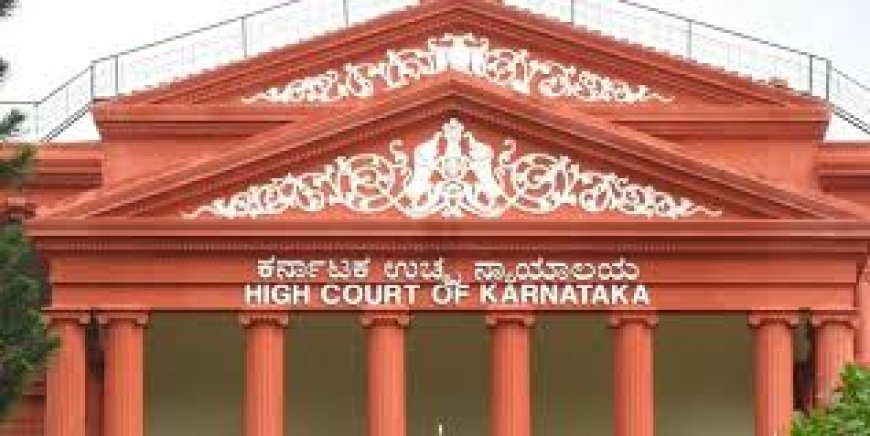Karnataka HC reserves verdict in X vs Union Govt case on Sahyog Portal, Section 79
The Karnataka High Court has reserved its verdict in the landmark case between X and the Union Government over the Sahyog Portal and Section 79 of the IT Act. Read detailed analysis, legal arguments, and stakeholder responses.

Bengaluru, July 29, 2025 — In a case that could significantly impact India’s evolving digital governance framework, the Karnataka High Court has reserved its verdict in the high-stakes legal battle between social media platform X (formerly Twitter) and the Union Government over the Sahyog Portal and the interpretation of Section 79 of the Information Technology Act, 2000.
The division bench, led by Chief Justice N.V. Prasad and Justice Rekha Patil, concluded hearings after weeks of detailed arguments presented by both parties. The case is being closely watched by technology companies, civil rights activists, and legal experts, given its implications for intermediary liability, user privacy, and platform accountability in India.
Background: X Challenges Government Overreach
The legal tussle began in early 2024 when X filed a petition challenging the government’s directives to integrate with the Sahyog Portal—an official government dashboard developed to enable real-time monitoring of content flagged for misinformation, hate speech, and national security threats. X argued that mandatory integration with the portal violates the safe harbor provisions granted under Section 79 of the IT Act.
As per Section 79, intermediaries like X are not liable for user-generated content provided they adhere to due diligence requirements. However, X contended that the Sahyog Portal mandates go beyond "due diligence" and amount to "real-time surveillance," infringing upon the company's autonomy and user privacy rights.
Centre’s Argument: "Sahyog Portal Is A Safeguard, Not Surveillance"
The Union Government, represented by Additional Solicitor General Aishwarya Sharma, defended the Sahyog Portal as a vital national interest initiative. “The portal is not about surveillance. It is a collaborative tool to ensure that content violating Indian law is flagged promptly and dealt with transparently,” Sharma said during the hearing.
The government emphasized that India, as one of the world's largest digital markets, needs modern tools to combat the spread of disinformation, particularly during elections, public health emergencies, or law and order situations.
Citing incidents such as the 2023 Manipur misinformation crisis and the coordinated bot attacks during general elections, the Centre insisted that digital platforms must adopt a more proactive role in content moderation.
Legal Experts Weigh In: Is Section 79 Being Rewritten?
The case has triggered widespread debate among legal experts about whether the Sahyog Portal requirements overstep the bounds of Section 79.
“Section 79 offers conditional immunity, but the conditions are becoming increasingly burdensome,” said Neha Bakshi, a Bengaluru-based cyberlaw expert. “The government’s insistence on real-time compliance creates a grey zone where intermediaries are being nudged into becoming arbiters of speech—which the law does not intend.”
Others view the case as a much-needed legal evolution. “Digital threats are dynamic, and India must innovate its legal and technical toolkits. The Sahyog Portal might just be an example of lawful innovation, as long as adequate safeguards are in place,” argued Dr. Rahul Karandikar, former member of the Data Protection Committee of India.
Industry Reactions: Big Tech on Edge
Tech companies, especially global platforms, are watching the case with apprehension. A loss for X could set a precedent that forces other intermediaries like Meta, Google, and Telegram to comply with Sahyog integration or risk losing safe harbor protections.
An anonymous senior executive from a leading global platform said, “If the government wins, it opens the door to constant government oversight. We already comply with Indian laws, but this moves toward proactive censorship.”
Smaller platforms also fear compliance costs. “Unlike large players, startups lack the infrastructure for real-time takedowns. Mandating this could stifle innovation,” said Priya Iyer, founder of a Bengaluru-based microblogging platform.
Civil Society Raises Red Flags on Privacy, Oversight
Digital rights groups like the Internet Freedom Foundation (IFF) and the Software Freedom Law Center (SFLC) have intervened in the case, cautioning the court about the long-term impact on civil liberties.
In a statement, the IFF said: “Mandating real-time surveillance in the name of public safety is disproportionate. Any such system must be backed by legislative oversight, transparency, and independent audits.”
They have called for the government to publish an impact assessment of the Sahyog Portal and conduct public consultations before making it mandatory.
Investor Outlook: Uncertainty Looms Over Tech Sector
While the case does not directly affect financial markets, the ruling could influence investor sentiment toward tech companies operating in India.
“A restrictive verdict might create compliance challenges that affect the profitability of digital platforms. On the flip side, a pro-platform verdict could trigger demands for reform from law enforcement agencies,” said Meenakshi Rao, Senior Tech Analyst at Axis Securities.
Foreign investors may reassess India’s ease-of-doing-business score in the digital sector depending on the verdict. Some have already flagged “regulatory unpredictability” as a top concern in recent FICCI and NASSCOM surveys.
What’s Next: Awaiting Judicial Clarity
The High Court has not indicated a timeline for the verdict, but sources suggest a decision may come by mid-August. Legal observers believe that the court might issue guidelines to strike a balance between national interest and digital freedom rather than take an absolute position.
For now, the spotlight remains on the Karnataka High Court as stakeholders across legal, tech, and policy domains await a ruling that could shape the contours of India’s digital landscape for years to come.
What's Your Reaction?
 Like
0
Like
0
 Dislike
0
Dislike
0
 Love
0
Love
0
 Funny
0
Funny
0
 Angry
0
Angry
0
 Sad
0
Sad
0
 Wow
0
Wow
0












































































